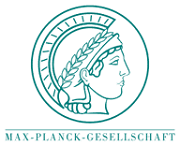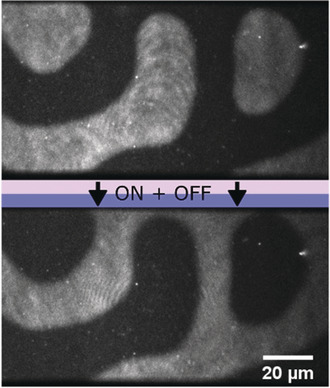Journal list menu
Export Citations
Download PDFs
Editorial
Editorial: Chemistry and the Max Planck Society: A Stable Bond Resonating into the Future
- First Published: 27 April 2015
Review
Water–Air Interfaces
Molecular Structure and Dynamics of Water at the Water–Air Interface Studied with Surface-Specific Vibrational Spectroscopy
- First Published: 15 April 2015

Lightly scratching the surface: A central question regarding the water–air interface is to what extent the structure and dynamics of water molecules is influenced by the breaking of hydrogen bonds, and thus how they differ from those in the bulk water? One method to study the water–air interface is the laser-based surface-specific vibrational spectroscopy. The advances made by these investigations are presented and discussed.
Communications
Bio-inspired Catalysts
Direct Comparison of the Performance of a Bio-inspired Synthetic Nickel Catalyst and a [NiFe]-Hydrogenase, Both Covalently Attached to Electrodes†
- First Published: 03 July 2015
![Direct Comparison of the Performance of a Bio-inspired Synthetic Nickel Catalyst and a [NiFe]-Hydrogenase, Both Covalently Attached to Electrodes](/cms/asset/c4b34a76-ba4c-410e-bff8-2b37d8235d9b/mcontent.jpg)
Inspirational performance: The H2 oxidation performance of a surface-immobilized bio-inspired Ni-based complex is directly compared with [NiFe]-hydrogenase. The enzyme outperforms the Ni complex at high pH, while the Ni complex outperforms the enzyme at acidic pH and in the presence of CO. Both show competitive functionality compared to Pt. These results suggest benefits for both synthetic and natural catalysts in practical applications.
Host–Guest Systems | Hot Paper
Dynamic Inclusion Complexes of Metal Nanoparticles Inside Nanocups†
- First Published: 08 May 2015

Nanocup with nanoparticle: Dynamic 1:1 host–guest inclusion complexes of metal nanoparticles inside oxide nanocups are fabricated by means of a reactive double Janus nanoparticle intermediate in a kinetically controlled process. Release of the nanoparticle guests from the nanocups can be efficiently triggered by an external stimulus.
Medicinal Chemistry
A Combination of Spin Diffusion Methods for the Determination of Protein–Ligand Complex Structural Ensembles†
- First Published: 15 April 2015

Protein–ligand complexes: A combination of the spin-diffusion-based NMR methods INPHARMA, trNOE, and STD (STI; see picture) results in an accurate scoring function for docking modes and therefore determination of protein–ligand complex structures. Applications are shown on the model system protein kinase A and the drug targets glycogen phosphorylase and soluble epoxide hydrolase.
Perovskite Solar Cells
The Significance of Ion Conduction in a Hybrid Organic–Inorganic Lead-Iodide-Based Perovskite Photosensitizer†
- First Published: 15 May 2015
NMR Spectroscopy
Long-Range Residual Dipolar Couplings: A Tool for Determining the Configuration of Small Molecules
- First Published: 11 September 2015

Rewarding long-distance relationships: Long-range residual dipolar couplings (RDCs) between protons and remote carbon atoms complement one-bond RDCs in conveying NMR spectroscopic information about the three-dimensional structure of molecules in solution. The use of long-range RDCs in conjunction with one-bond RDCs showed, on the basis of the quality (Q) factor, that the correct diastereomer of strychnine had the SRRSRS configuration (see graph).
Cell Adhesion
Minimal Synthetic Cells to Study Integrin-Mediated Adhesion
- First Published: 07 August 2015

A well-controlled model system that mimics integrin-mediated adhesion has been developed. The interactions of these synthetic cells with various extracellular matrix proteins were analyzed using a quartz crystal microbalance with dissipation monitoring, which confirmed that the integrin had been functionally incorporated into the lipid vesicles.
CO2 Fixation
Screening and Engineering the Synthetic Potential of Carboxylating Reductases from Central Metabolism and Polyketide Biosynthesis
- First Published: 18 September 2015

Engineering promiscuity: The molecular basis for substrate specificity of carboxylating enoyl-CoA reductases was identified by screening a CoA-thioester substrate library against a library of enzyme homologues. Site-directed mutagenesis of the promiscuity-determining sites enabled a previously restrictive enzyme to accept a variety of new, bulky substrates.
Mechanochemistry
Mechanical Reversibility of Strain-Promoted Azide–Alkyne Cycloaddition Reactions
- First Published: 25 January 2016

Broken by you: Mechanical cycloreversion of triazoles depends on the direction of the applied force (shearing vs. unzipping) acting on the triazole unit. Computational screening of a number of triazoles formed from strained alkynes shows that cycloreversion only occurs when the force acts in the unzipping geometry and identifies azadibenzylcyclooctyne (DIBAC) as a promising strained alkyne for mechanically reversible triazole structures.
Polymeric Nanostructures
Fabrication of Defined Polydopamine Nanostructures by DNA Origami-Templated Polymerization
- First Published: 06 December 2017
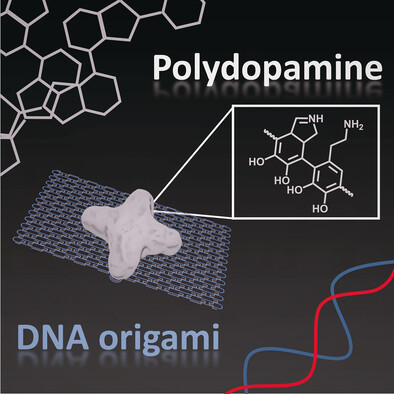
Starring PD: Defined polydopamine (PD) nanostructures were created on DNA origami templates. Multiple DNAzyme moieties precisely positioned on DNA origami oxidizes dopamine locally, which is crucial to control PD formation with nanoscale precision. The method provides a unique access towards the synthesis of anisotropic PD nanodevices coupled with precision spatial control.
Synthetic Biology
Organocatalysis
The Catalytic Asymmetric Mukaiyama–Michael Reaction of Silyl Ketene Acetals with α,β-Unsaturated Methyl Esters
- First Published: 12 December 2017

A reaction half-life of over 35 million years without catalysis: Cinnamate esters belong to the least electrophilic Michael acceptors and react extremely slowly even with strong nucleophiles such as silyl ketene acetals if no catalysis is applied. Extremely active silylium imidodiphosphorimidate (IDPi) Lewis acid catalysts now enable highly efficient Mukaiyama–Michael reactions at low catalyst loadings and with excellent enantio- and diastereocontrol.
Catalysis Mechanisms | Very Important Paper
The Common Intermediates of Oxygen Evolution and Dissolution Reactions during Water Electrolysis on Iridium
- First Published: 08 December 2017
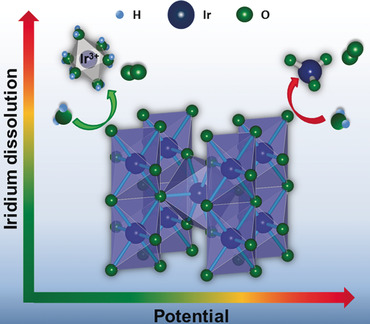
Possible routes of Ir dissolution are proposed based on the detection of a common intermediate in the oxygen evolution reaction. At least three dissolution pathways are possible depending on the nature of the electrode and potential. At high current densities two reactions proceed via formation of volatile IrO3. Hindering IrO3 hydrolysis can be a strategy to improve electrode stability in the oxygen evolution reaction.
Reviews
Electron Microscopy
Electron Cryo-microscopy as a Tool for Structure-Based Drug Development
- First Published: 10 November 2016
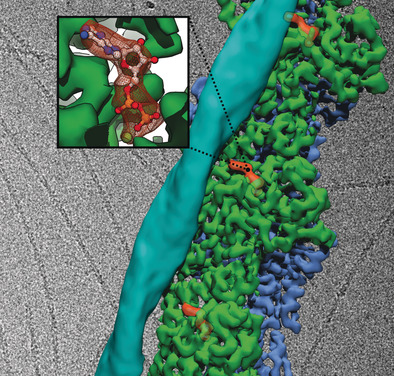
Cold as ice: A new generation of detectors has revolutionized electron cryo-microscopy (Cryo-EM). This review summarizes the use of cryo-EM to study the structure of pharmacologically relevant macromolecules that have escaped classical techniques. In many of these cases, drug-like molecules have been identified, thus validating cryo-EM as a useful tool for structure-based drug design.
Communications
NMR Spectroscopy
The Binding Mode of a Tau Peptide with Tubulin
- First Published: 03 January 2018
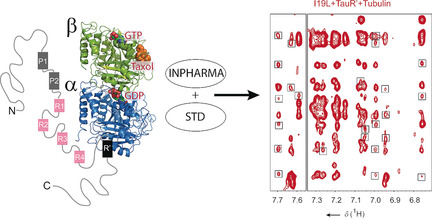
The interaction of Tau protein with soluble tubulin has been dissected by using NMR methods optimized for ligand–receptor interactions. These methods reveal a complex, phosphorylation-dependent binding mode of the flanking domain downstream of the four microtubule-binding repeats of Tau to α-tubulin.
Oxygen Evolution
Cobalt-Bridged Ionic Liquid Polymer on a Carbon Nanotube for Enhanced Oxygen Evolution Reaction Activity
- First Published: 09 January 2018
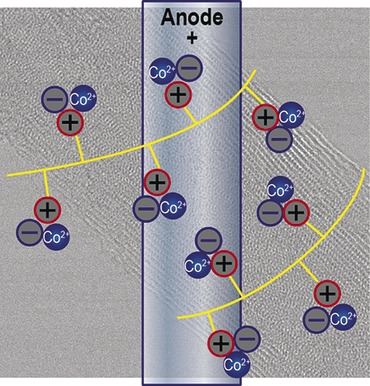
Co-operating: A scalable method was developed to get single cobalt ions on CNT surface with polymerized ionic liquid. The polymerized ionic liquid can adjust the electron structure of the atomically dispersed Co which is favorable for the oxygen evolution reaction. The tangled polymerized ionic liquid, as counter ion, make the Co ion stable on CNT surface.
Antiferromagnetic Materials
β-Ag3RuO4, a Ruthenate(V) Featuring Spin Tetramers on a Two-Dimensional Trigonal Lattice
- First Published: 04 March 2016

Magnetic attraction: β-Ag3RuO4 was synthesized using hydrothermal conditions. The crystal structure is based on a hexagonal close packing of oxygen, and displays tetrameric polyoxoanions [Ru4O16]12− embedded in a 2D trigonal environment. The Ru4 diamonds are separated by silver, which suppress the frustrated antiferromagnetic exchange common to trigonal lattices. Strong interanionic antiferromagnetic interactions dominate instead. Key: Ag gray, Ru cyan, O red.
Agostic Interactions | Very Important Paper
Formation of Agostic Structures Driven by London Dispersion
- First Published: 07 March 2018
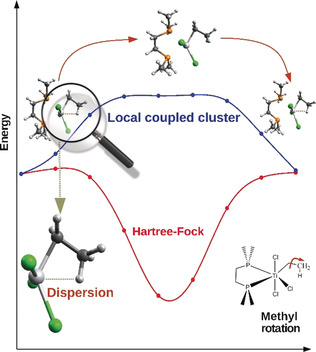
The importance of dispersion: DLPNO-CCSD(T) local energy decomposition analysis was used to elucidate the nature of β-agostic interactions. Short-range London dispersion between the agostic C−H bond and the metal center drives the formation of agostic structures to a large extent. These results were used to rationalize a series of previously published experimental findings.
Iron Hydrogenases
Dioxygen Sensitivity of [Fe]-Hydrogenase in the Presence of Reducing Substrates
- First Published: 20 February 2018
![Dioxygen Sensitivity of [Fe]-Hydrogenase in the Presence of Reducing Substrates](/cms/asset/09059211-6fd4-4288-9594-abe157a0f69f/anie201712293-toc-0001-m.jpg)
Mono-iron hydrogenase carrying an iron guanylylpyridinol (FeGP) cofactor reversibly catalyzes hydride transfer from H2 to methenyltetrahydromethanopterin. The enzyme becomes O2 sensitive under turnover conditions because reduced O2 (H2O2) destroys the FeGP cofactor. It is postulated that the reductant of O2 is a short-lived intermediate of the catalytic reaction; probably an iron hydride species generated by H2 cleavage.




